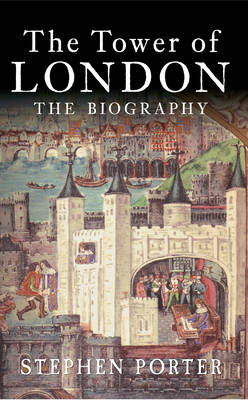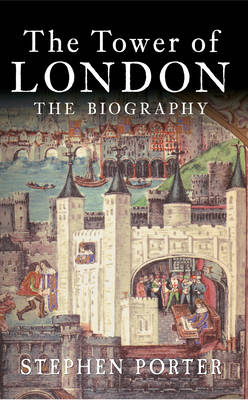
Door een staking bij bpost kan je online bestelling op dit moment iets langer onderweg zijn dan voorzien. Dringend iets nodig? Onze winkels ontvangen jou met open armen!
- Afhalen na 1 uur in een winkel met voorraad
- Gratis thuislevering in België vanaf € 30
- Ruim aanbod met 7 miljoen producten
Door een staking bij bpost kan je online bestelling op dit moment iets langer onderweg zijn dan voorzien. Dringend iets nodig? Onze winkels ontvangen jou met open armen!
- Afhalen na 1 uur in een winkel met voorraad
- Gratis thuislevering in België vanaf € 30
- Ruim aanbod met 7 miljoen producten
Zoeken
Omschrijving
The Tower of London is an icon of England's history. William the Conqueror built the White Tower after his invasion and conquest in 1066 to dominate London, and it has become infamous as a place of torture, execution and murder. The deaths of royals attracted most attention: the murder of the Princes in the Tower, the beheading of Henry VIII's wives Anne Boleyn and Katherine Howard, and Lady Jane Grey, Henry's great-niece, and queen for just nine days. Few prisoners recorded their experiences, but John Gerard, a Catholic priest imprisoned during Elizabeth I's reign, wrote of being questioned in the torture room, which contained 'every device and instrument of torture'. After being hung from manacles, his wrists were swollen and he could barely walk. Members of the aristocracy could not be tortured, and those incarcerated for a long time used their time to write. Sir Walter Raleigh wrote his vast History of the World in the Tower. Control of the Tower was vital at times of crisis, during rebellions and civil wars. It has also been the country's principal arsenal. It housed the Royal Mint, the national archives, the Crown jewels and wealthy Londoners' riches, and in the royal menagerie it contained one of the earliest zoos. Stephen Porter's landmark history traces the evolution of the Tower and its changing role, the many personalities who lived or were imprisoned there, and the 'voices' of contemporaries during the Tower's long history, spanning more than 900 years.
Specificaties
Betrokkenen
- Auteur(s):
- Uitgeverij:
Inhoud
- Aantal bladzijden:
- 288
- Taal:
- Engels
Eigenschappen
- Productcode (EAN):
- 9781445643779
- Verschijningsdatum:
- 15/01/2015
- Uitvoering:
- Paperback
- Formaat:
- Trade paperback (VS)
- Afmetingen:
- 196 mm x 127 mm
- Gewicht:
- 272 g

Alleen bij Standaard Boekhandel
+ 36 punten op je klantenkaart van Standaard Boekhandel
Beoordelingen
We publiceren alleen reviews die voldoen aan de voorwaarden voor reviews. Bekijk onze voorwaarden voor reviews.











